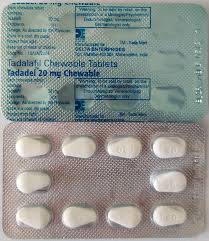
Understanding Antiallergika: Their Importance and Usage
Allergies have become a significant health concern in today’s world, affecting millions of people across various age groups. As a response to this escalating issue, the pharmaceutical industry has developed a range of medications known as Antiallergika to help alleviate allergic reactions. These medications can be life-changing for individuals suffering from allergies, allowing them to live freely without the constraints of their symptoms. For more detailed information on Antiallergika, feel free to visit Antiallergika https://ygeia-sto-spiti.gr/antiallergika/.
What Are Antiallergika?
Antiallergika, or anti-allergic medications, are pharmacological substances specifically designed to counteract the effects of allergens. Allergens are usually harmless substances that can trigger allergic reactions in susceptible individuals. These reactions can manifest in various forms, including sneezing, itching, rashes, and even severe conditions such as anaphylaxis.
Types of Antiallergika
There are several classes of Antiallergika, each serving a unique role in managing allergy symptoms:
1. Antihistamines
Antihistamines are perhaps the most well-known type of Antiallergika. They work by blocking the action of histamine, a chemical released during an allergic reaction that is responsible for most allergy symptoms. Common antihistamines include loratadine, cetirizine, and diphenhydramine. They help reduce symptoms such as itching, runny nose, and sneezing, making them essential for managing seasonal allergies and hay fever.
2. Corticosteroids
Corticosteroids are anti-inflammatory medications that can be used to treat more severe allergic reactions. They work by suppressing the immune response, which can be beneficial in managing conditions like asthma and dermatitis. Corticosteroids can be administered in various forms, including inhalers, nasal sprays, and topical creams.
3. Leukotriene Receptor Antagonists
This class of medications works by blocking leukotrienes, chemicals that contribute to inflammation and mucus production in the respiratory system. Montelukast is a widely used leukotriene receptor antagonist that helps manage asthma and allergic rhinitis.
4. Mast Cell Stabilizers

Mast cell stabilizers, such as cromolyn sodium, prevent the release of histamines and other chemicals from mast cells. They are often used in nasal sprays to prevent allergy symptoms and are particularly effective for individuals with chronic rhinitis.
How Antiallergika Work
The mechanism of action for each type of Antiallergika varies but mainly revolves around interrupting the allergic response:
- Antihistamines: By blocking histamine receptors, antihistamines effectively mitigate symptoms like itching and swelling.
- Corticosteroids: These medications reduce inflammation and inhibit the immune response, alleviating severe symptoms and preventing flare-ups.
- Leukotriene Receptor Antagonists: They block the action of leukotrienes, reducing bronchoconstriction and inflammation in asthma patients.
- Mast Cell Stabilizers: These agents stabilize mast cells, preventing them from degranulating and releasing pro-inflammatory substances.
When to Use Antiallergika
Antiallergika can be utilized in various scenarios:
- Seasonal Allergies: For individuals with hay fever, antihistamines are often the first line of defense.
- Chronic Conditions: Those suffering from asthma or chronic allergic rhinitis may benefit from a combination of treatments, including corticosteroids and leukotriene receptor antagonists.
- Skin Reactions: Topical corticosteroids can be effective for skin-related allergic reactions, providing localized relief.
Potential Side Effects of Antiallergika
While Antiallergika can significantly improve the quality of life for allergy sufferers, it’s essential to be aware of potential side effects:
- Antihistamines: Some side effects include sedation, dry mouth, and dizziness, particularly with first-generation antihistamines.
- Corticosteroids: Long-term use can lead to skin thinning, weight gain, and increased blood sugar levels.
- Leukotriene Receptor Antagonists: Side effects may include mood changes and gastrointestinal issues.
- Mast Cell Stabilizers: Generally well-tolerated, but some users may experience throat irritation or coughing.
Conclusion
Antiallergika play a crucial role in managing allergic reactions and improving patients’ quality of life. By understanding the different types and their mechanisms, individuals can make informed decisions regarding their allergy management. As with any medication, it’s essential to consult with a healthcare provider to determine which Antiallergika is best suited for one’s needs. Through advancements in medication and increased awareness, those living with allergies can enjoy a life less burdened by symptoms.